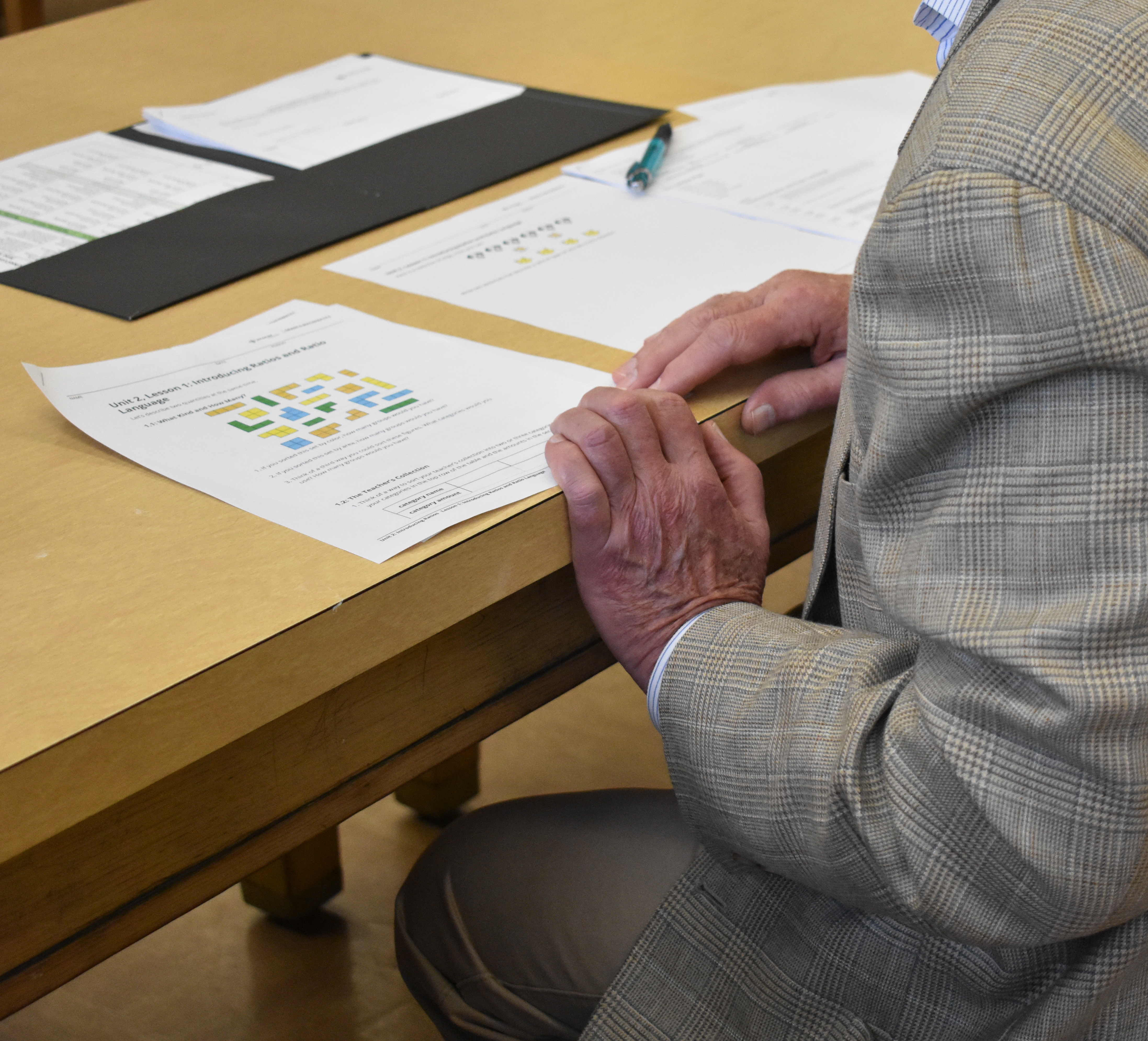A
Identify Data to Collect
Decide on the data that will help you grasp what students learned during the lesson and how they learned it.
What data will illuminate student thinking and learning related to the lesson goals? What data will help you understand the catalysts and barriers to learning as the lesson unfolded? What data will help you understand the theory of action in your research theme? These are the data you want to collect.
Your research lesson plan is a hypothesis about the learning flow that will occur. Your data collection should help you understand each phase of the learning flow. Were students interested in the task presented to them? What prior knowledge did they bring to bear? Did the student thinking you anticipated emerge, and what additional thinking arose? Did the tension or puzzle you expected emerge, and did it drive students to refine their thinking? What helped students to refine their thinking or prevented them? How did students’ thinking at the end of the lesson differ from their thinking at the beginning of the lesson?
The specific data you collect depend on your research theme and lesson goals. For example, if you are trying to improve the quality of inferences students make from primary source documents, you might want to trace the changes in those inferences over the course of the lesson, and the catalysts for change. If you think that partner discussions can help students formulate better questions, you might study students’ questions before and after the partner discussions.
B
Choose Data Collection Approaches and Tools
Plan for the different data sources – such as student observations, written work, and lesson documentation – that will enable you to understand how the lesson unfolded and what students learned.
Many lesson study teams choose several focal students to follow over the entire unit, to understand how the learning trajectory of those students relates to the vision in the unit plan. This can be done by examining students’ written work over the unit. For example, a team studying a unit on magnets selected three students with different levels of science achievement/interest and examined their reflective science journals for each lesson of the unit. Journal entry summaries from these three students included in the Teaching-Learning Plan allowed observers to understand the ideas these students had developed during each lesson of the unit, and also to examine any new ideas the students developed during the research lesson (the culminating lesson of the unit, in which students built toys to show principles of magnetism).
For the research lesson itself, it is generally most fruitful to have observers follow a selected student(s) from the start to the finish of a lesson in order to understand exactly how the learning progressed for that student(s), and what supported or obstructed learning. Be sure to sure to select for observation students who will enable you to understand how the lesson played out for different learners–for example, second language learners versus native speakers, reluctant versus eager learners, struggling and advanced students. One or more team member can be assigned to collect additional data of interest to the team.
The following data collection tools will typically be needed:
- A seating chart with student names (copies for all observers, so they can more easily grasp and record student actions).
- A prepared data collection form that reminds observers of the lesson goals and particular strategies you want to look for. (It may be useful to give a name and abbreviation to each strategy, to speed up note-taking. RA is repeated addition, M is multiplication, etc.). The form should have a column to note time; the data collection template below provides a customizable example.
- A data source from the end of the lesson, such as a task, reflective journal, or piece of writing that captures individual students’ thinking at the end of the lesson.
- A plan to capture the work on the board or other public venues (e.g., photographs of the board, poster paper that can be brought to the post-lesson discussion, or photographic record of other publicly used materials).
Records of students’ prior thinking are very valuable. For example, if your unit is designed to help students build conceptual understanding of multiplication, it may be useful to note on the seating chart what strategies (counting by ones, skip counting, repeated addition, etc.) each student used in the prior lesson.
The team should add any data collection elements specific to their goals and theory of action. For example, a team focused on building teacher questioning might note the time and content of each teacher question, or a team interested in English learner development might track speech initiated by English learners.
A modifiable data collection template is found in the Resources section.
Assign individual team members or outside observers to cover all the planned data collection elements.
Design your data collection plan and add to Points of Evaluation (# 10 in the Teaching-Learning Plan template)


